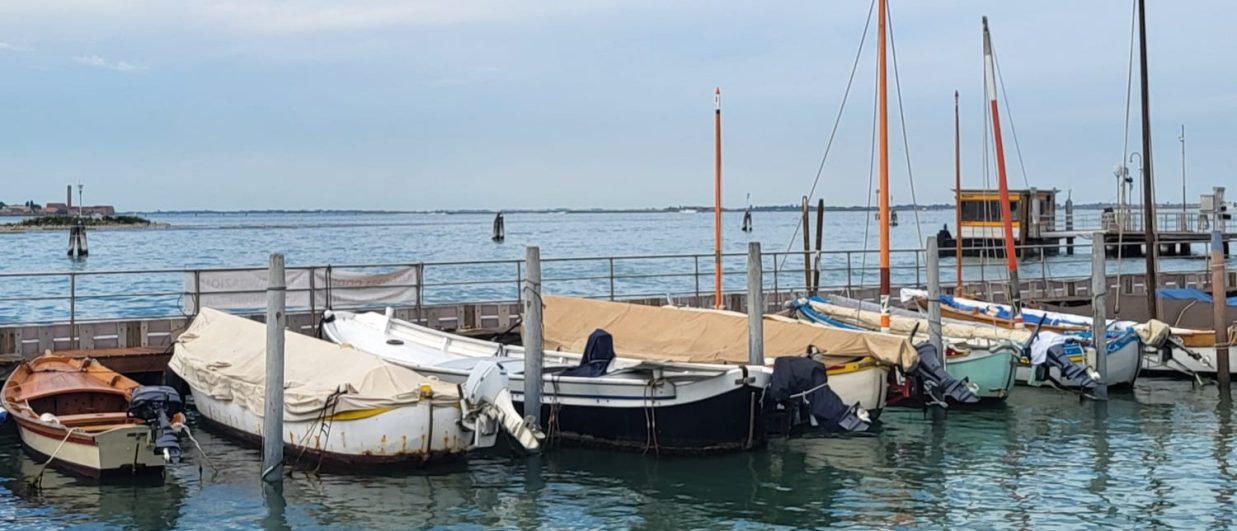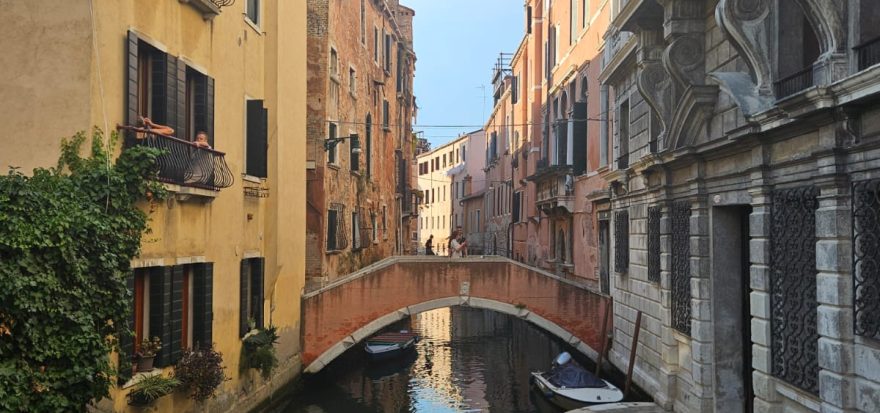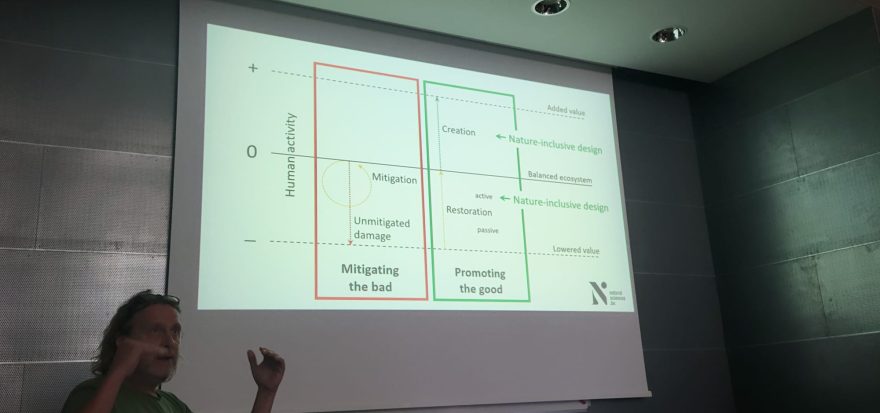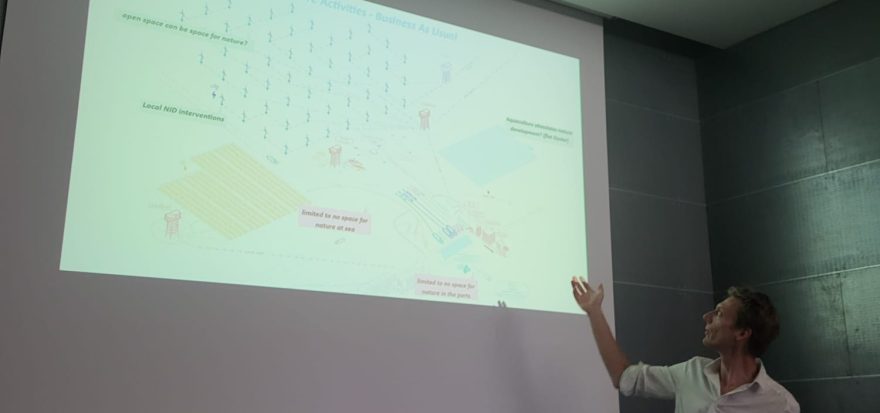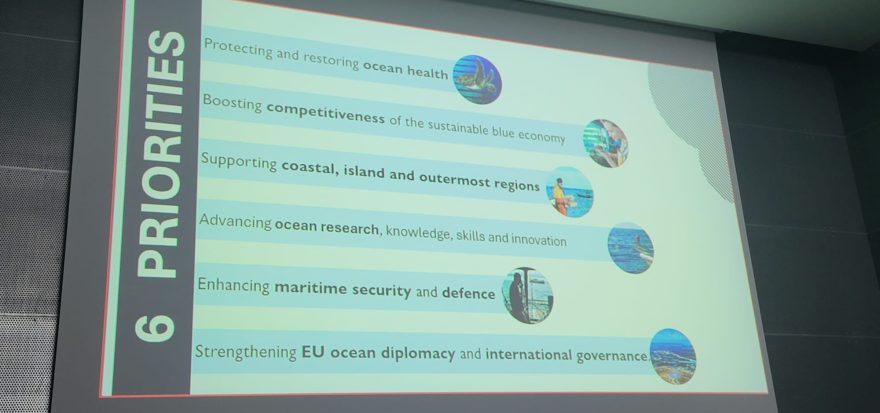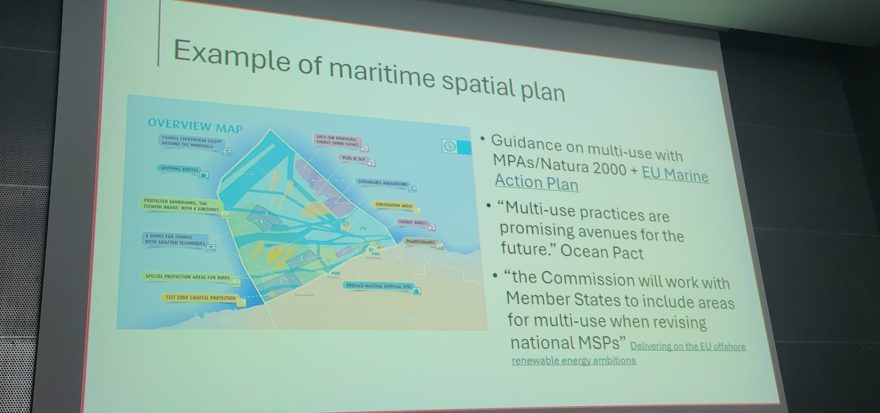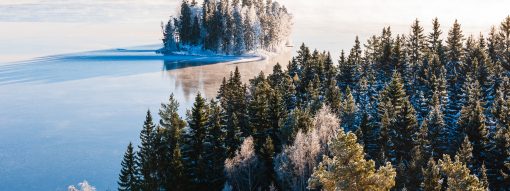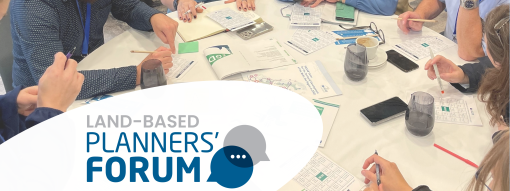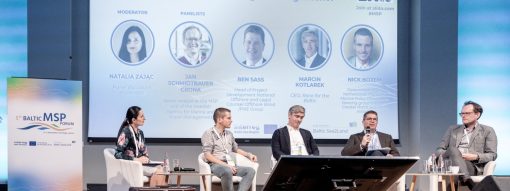Mariparks in the Spotlight: First Multi-Use at sea design workshop sets bold course in Venice
NESB project news.
Under the Venetian sun, experts, innovators, and policymakers convened to explore the future of marine spatial planning through the lens of Mariparks — an emerging framework for offshore multi-use zones. The workshop on 2 July 2025 in Venice, Italy, organised by The Blue Cluster in partnership with ORG Permanent Modernity, marked the first in a series of scenario-building sessions aimed at designing resilient, multifunctional marine hubs that serve innovation in the view of biodiversity, energy, food, and security goals.
A strategic EU push for Multi-Use
Opening the session, Céline Frank of the European Commission – DG MARE highlighted the strategic importance of multi-use in European marine policy. As part of the EU’s broader blue economy objectives, multi-use is no longer optional but where possible a necessity in light of spatial constraints at sea. Frank pointed to smart systems and automation as natural allies in this shift, and the enablers in the Mission Ocean — and stressed that what is being explored now in workshops like this is years ahead of current land-based spatial planning models.
“The European Commission will work with EU Member States to implement multi-use where space is limited
— this is not just an innovation challenge but a governance challenge,” she stated.
Key Takeaways from the Venice “Work Bench”
Mariparks were framed as a planning method more than a fixed concept — a way to integrate multiple marine functions into a single coherent zone, including renewable energy (wind, floating solar, tidal), aquaculture, defense infrastructure, and nature-inclusive design (NID) using smart systems and considering social challenges with stakeholder engagement.
Several motivations were discussed — with participants encouraged to critically assess their relevance:
- Space at sea is limited, but the urgency and scale must be properly contextualised.
- Protein transition and food security remain valid drivers, particularly in a geopolitical context where war has underscored the need for local production. However, the business case for marine protein still requires evidence. Policy decisions are not solely driven by economy, agriculture is funded to remain alive, since many years.
- Energy diversification is vital, especially in the face of global instability.
- Nature restoration and creation must be clearly distinguished and reflected in design objectives. Mariparks can provide valid foeraging and breeding areas and serve as stepping stones and connectivity areas.
- Shift to smart aquaculture techniques is needed for integration and upscaling in Mariparks, less intensive practices like sea ranging are feasible and required now.
The panel included representatives from Parkwind, Greentide, Capgemini Invent, Shells & Valves, and Oceans of Energy, with lively discussion around feasibility, policy alignment, and technical readiness:
- Jochem Vermeir (Parkwind) emphasized that design-phase integration is key: cable pooling and infrastructure sharing are only viable if considered from the start.
- Kristof Verlinden (Parkwind) called for early involvement of military stakeholders — not only to avoid later conflicts but to harness potential synergies such as shared sensors and monitoring systems. “Being present at sea is the best protection,” he noted, highlighting how Mariparks could also improve surveillance and defense.
- Nancy Nevejan (Shells & Valves) underscored the immediate feasibility of low-intensity aquaculture, such as sea ranching and nature-inclusive designs that stimulate wild populations. These approaches, while lower in yield, offer ecosystem value and reduce operational risks. She advocated for multi-use design zones with space for foraging and breeding, and called for smart aquaculture systems to drive innovation forward.
- Tom van den Nieuwenhuijzen (Capgemini Invent) shared the Dutch experience: cross-ministerial cooperation across food, ecology, defense, coastal protection, and energy sectors resulted in a joint vision after nine months of dialogue. He argued for a market-based approach supported by facilitation tools, funding, insurance, and policy alignment.
- In discussion with the public, the concept of a “gebiedspaspoort” (area passport) was raised — a first step toward operational multi-use in the Netherlands. Though scaling remains limited, it was seen as a promising testbed for innovation, highlighting the need for policy adaptation and iterative learning.
Looking Ahead
This first “work bench” session in Venice laid the foundation for further scenario planning and feasibility modelling. The ultimate goal: develop realistic, scalable Maripark configurations that align ecological ambition with industrial and strategic interests.
A heartfelt thank-you to our contributors:
- Kristof Verlinden (Parkwind)
- Alexander Jordaens (Greentide)
- Jochem Vermeir (Parkwind)
- Nancy Nevejan (Shells & Valves)
- Tom van den Nieuwenhuijzen (Capgemini Invent)
________________________________________
With the right tools, partnerships, and ambition, Mariparks can unlock a truly sustainable and inclusive blue economy — balancing the needs of nature, industry, and society at sea.
Follow the project activities on website www.nesbproject.eu, on social media – Bluesky @theNESBproject.bsky.social, LinkedIN NESBproject.
The project is funded under the European Maritime, Fisheries and Aquaculture Fund (EMFAF).

Co-funded by the European Union. Views and opinions expressed are however those of the project consortium only and do not necessarily reflect those of the European Union or CINEA. Neither the European Union nor the granting authority can be held responsible for them.
